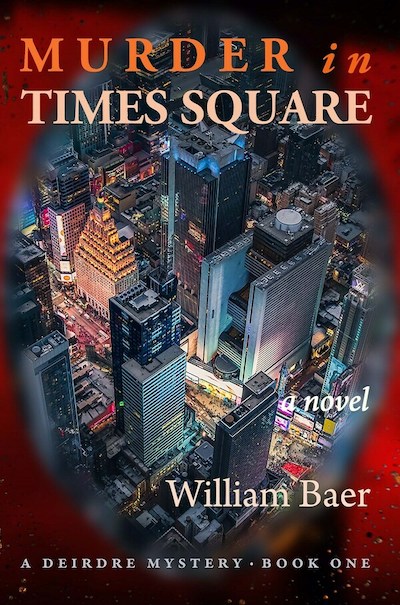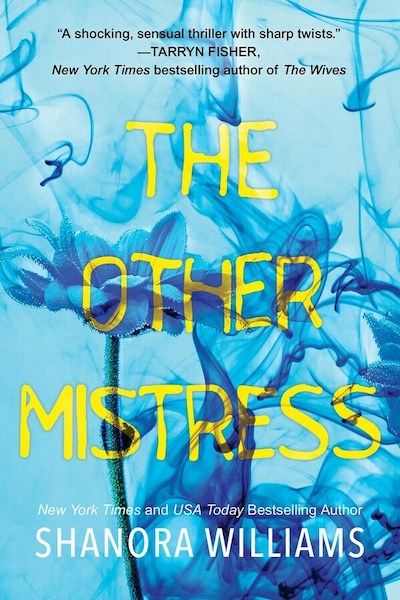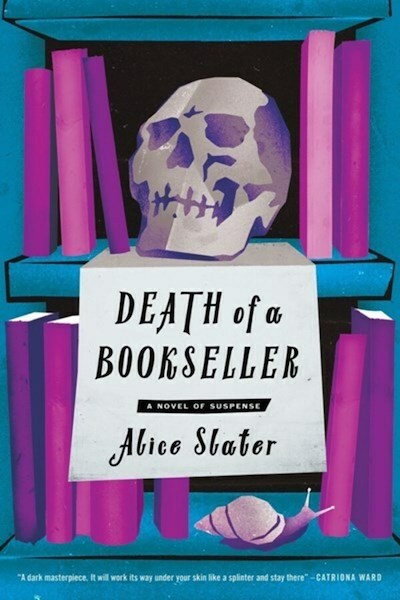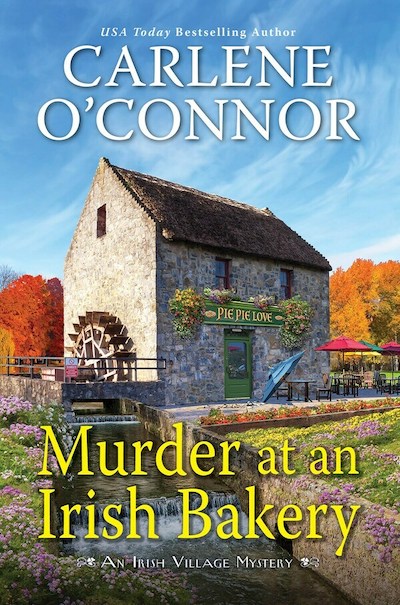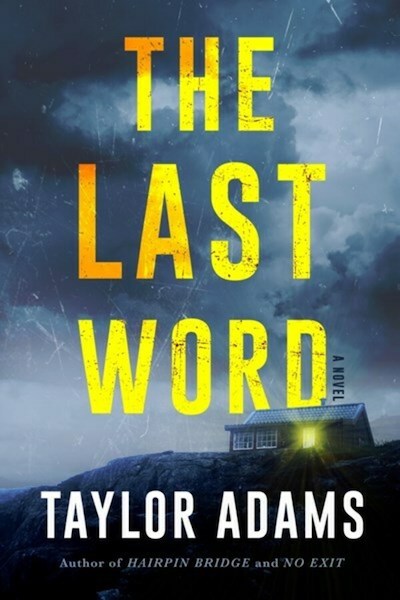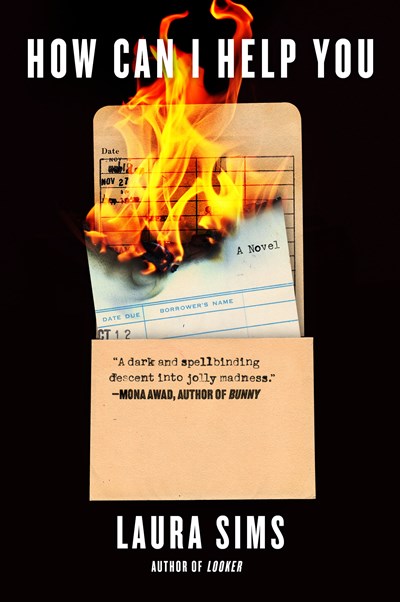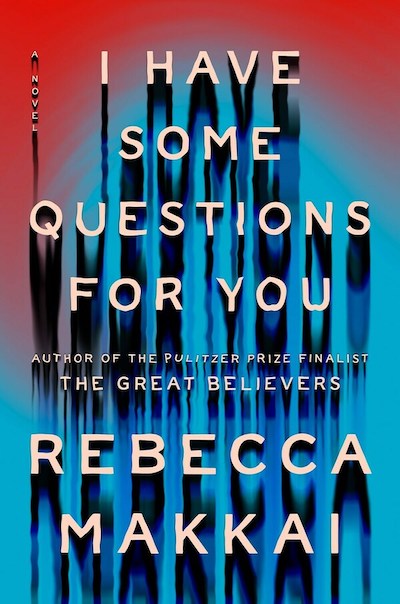Yes, it’s only October. But my money is on Bad Summer People as the best beach book of the summer of 2023. Set in Salcombe, a made-up community on Fire Island—not the like the gay Pines, more the reclusive and ritzy Saltaire—this book, in the great literary tradition of Peyton Place, has it all: adultery, fashion, tons of gossip, backbiting, lying, hot sex with the tennis pro, tasteful plastic surgery, alcoholism, and even a corpse. Plus the sort of casual racism and classism liberal one-percenters indulge in. It opens with a prologue, set at the end of August, in which a body is discovered face down off the boardwalk. The book then backs up to late June, as the all-white residents arrive from the Upper East side and Scarsdale for the start of a new season. From there we follow the tumultuous summer in chronological order, moving quite handily among a group of narrators, from the above-mentioned Stanford tennis coach to the Filipino nanny to the gay Yale student/bartender and many more. At the gravitational center of the book are Jen Weinstein and Lauren Parker, the “it moms” who married into Salcombe—their husbands are best friends—and oversee the social action. Not another word from me, lest I spoil any of the fun, except to say the identities of both the victim and the murderer pack quite the punch. This book really hits the sweet spot for popular fiction and will appeal to a broad swathe of readers.
Review
“I can trace so much of my life back to a summer night when I was seventeen,” opens main character Nathan, and right away you’re reading through your fingers like watching a horror film. Nathan’s a good boy until that summer night, when racy LeeLee takes him to a party. One thing leads to another and next thing he gets The Phone Call: LeeLee’s pregnant and needs $1,000 to fix the problem. Nathan has $100. He has tough decisions to make and no perfect options, a problem faced by the other struggling characters in this book, all of whom are scraping by in Locksburg, PA. Years later, Nathan comes upon a chance to leave his troubles behind: when he rescues a man from a burning building, he finds a sack of money that he impulsively puts in his truck. Then we meet the other main characters, whose narratives alternate and overlap with Nathan’s: Paula, Nathan’s wife, a nurse who wants nothing to do with the money; Callie, a nurse who works with Paula and who wants to give a dying young patient one last chance at happiness, defying the girl’s fundamentalist Christian parents in the process; and Andy, a recovering heroin addict who, facing bottomless grief, puts his remaining days into punishing an evil man. New York Times editor Jaworowski’s characters are so real, their struggles so palpable, you won’t want to leave them. A must for fans of This Is Us.
his series debut features a woman who’s so glamorous and strong she has a superhero persona, complete with the superhero’s inner conflict. Deirdre Flanagan is a model, a beautiful 19-year-old who purposely makes herself uglier in daily life so she can pass unnoticed. While she loves clothes and the drama of a professional fashion shoot, modeling is very much her nine to five. In her spare time, she works with her doting father and his brother—they’re a former world-champion boxer and an NYC police captain, respectively, and the only parents she has known—to solve crimes against young women. When a woman in a striking red dress falls to her death from the roof of 1 Times Square, Deirdre hits the scene, finding another body as well as unexpected emotions upon viewing the remains. Why this case has hit her so hard and whether she can escape the escalating danger facing those involved with the victim and the case is a mystery that will keep readers rapt—although they’ll also enjoy being dropped into the world of New York City haute couture. Baer, who worked briefly in that world and is the author of the successful Jack Colt series, also offers a gritty contrast to the ritziness of fashion in his protagonist’s personal life: home is her father’s boxing gym, and between that setting and her life as an NYPD sidekick, the sarcasm and bullets keep flying. A fast, absorbing introduction to a daring star.
In the introduction by Williams (The Wife Before, The Perfect Ruin), readers are forewarned, that child abuse and sexual assault feature in this novel; they should still be prepared for whiplash when this turns from a “girl’s night in” kind of story to something much, much darker. Black couple Adira and Gabriel are living the high life—at first appearance. Adira’s an entrepreneur, the successful owner of a luxury clothing brand, Lovely Silk. Gabriel isn’t as successful—Adira’s keeping them afloat—but she doesn’t mind. She’s crazy about her husband and is shattered to see an email pop up on his phone that makes it clear he’s seeing another woman, Jocelyn. Actually, make that two women, Jocelyn and Julianna, with the former woman, when confronted by Adira, offering to join ranks with the wronged wife to make Gabriel pay. Thus starts the darkness, with stalking, lies, and desperation taking turns with another story, of two little girls, one of whom is being sexually abused by her mother’s boyfriend. Williams ramps up the tension and the mystery from the first page so that as the stories converge and a terrible truth is revealed, readers will be both enthralled and aghast. One for all those who’ve done what they had to do and lived to tell the tale.
A dangerous obsession, true crime, bookselling, alcoholism, and trauma—add some dark humor—and you have the ingredients for this utterly unique tale set in Spines, a present-day-London bookstore. Young, post-punk Roach has only ever worked as a bookseller at Spines, where she can indulge in her obsession with true crime—female victims only, please—and way overstock the true-crime section. Her Mom runs a bar and basically ignores Roach, while Roach’s boyfriend is an unwashed brute in a death metal t-shirt. But things aren’t going so well at this branch of Spines these days, and the corporate office has transferred some seasoned employees to bolster sales. This includes Laura, who’s all vintage dresses and rose oil, berets and hand-rolled cigarettes. She’s what Roach would call a “normie,” until Roach hears her give a poetry reading in which she references many of Roach’s favorite true-crime victims. Roach becomes obsessed with Laura, eventually going full-on stalker. But while Roach is fascinated with the perps, Laura is disgusted by the true-crime genre for glorifying these creeps. Instead, she pays homage to the victims, and does so from a very personal perspective. As Laura’s drinking becomes more and more out of control, it becomes easier and easier for Roach to take over, playing with Laura’s sense of reality and leading to an ending as dark as it is credible. The novel includes a wonderful cast of booksellers who bring some humorous subplots to the book. Readers who enjoyed Laura Sims’ How Can I Help You, reviewed here last week, will be ecstatic to meet these women.
We don’t normally review the 11th book in a series, because typically after a few titles the series needs no further introduction. But I grabbed this one from the (virtual) pile because 1. It’s set in Ireland, my former home; 2. It’s set in a bakery, my spiritual home; 3. Murder. The Ireland here is a thoroughly modern one, with the tale set around a baking-competition reality show. Famous cookbook author Aoife McBride is the one to beat, as the contestants vie to impress the judges with elaborate chocolate constructions, fancy layered creations, and to-die-for tea cakes, all to win twenty-thousand Euro and a boost to their baking-career ambitions. The producers throw in reality-show-required conflict, of course, but get more drama than they bargained for when a protester (“Sugar kills! Stop the show!”) outside the studio mysteriously drops dead. His is not the last face to fall in the flour, so to speak. Gardaí (police officers) Siobhán O’Sullivan and Aretta Dabiri and Siobhán’s new husband, Detective Sergeant Macdara Flannery, must solve the mystery while the cameras roll and the baking puns fly. This has more than the contestants’ groan-worthy puns, though, with O’Connor (No Strangers Here) giving readers a healthy balance of whodunit and bitchy competition, not to mention a cute relationship in still-in-the-honeymoon-phase Siobhán and Macdara. The closing recipe for Nigella Lawson’s Chocolate Guinness Cake alone is worth the book price.
Emma Carpenter is house-sitting in near-total isolation on the Washington coast. For company there’s Laika, her Golden Retriever; a retired alcoholic author a half-mile up the coast with whom she exchanges brief messages; and the occasional delivery person. Something’s bugging Emma. After all, you don’t take a gig like this unless you’ve got a project you’re working on or some issues you need to resolve, and for Emma it’s the latter. She keeps herself occupied by walking Laika and reading thrillers, plowing through two ebooks a day until she comes across a novel so misogynistic, so poorly written, she can’t help but give it a negative review, setting off an online dialog with the author, who demands the review be retracted. That’s when things start to get weird—and tension starts to heighten—as every evening the security lights switch on and off, or Emma hears footsteps in the house, or the CCTV catches an intruder outside her door—complete with ghoulish mask. Could it possibly be the author Emma has been arguing with? Whomever, it is, Emma is no damsel in distress, and she’d rather fight than run. From there the narrative speeds up, the terror mounts, and the layers of plot begin to unfold until the reader feels like they’re strapped to a one-person luge, runners greased and no way to get free. Perfect for the nail biters.
Clear your calendar, silence your phone, and settle down to enjoy Laura Sims’ latest book in one joyous sitting. You deserve it and I guarantee you’ll thank me. Set among library workers in a small public library—no author has ever gotten library culture as right as Sims—this book is as unsettling as a Shirley Jackson novel with the same crazy stalker energy of a Patricia Highsmith tale. It’s time to move on for ex-nurse Margo, who leaves in her wake scores of suspicious deaths in a handful of hospitals. A library clerk position at the Carlyle Public Library gives her a chance at redemption, along with a new name, hair color, and wardrobe. And she can still help people, “not the way I helped them before, at the hospital, but still.” She’s able to keep the lid on her urges, for the most part, until two years later when Patricia, a new reference librarian, is hired. The two strike up a friendship of sorts—they live in the same apartment building—but when an elderly patron dies in the bathroom, and Margo becomes way over-excited, Patricia finds herself becoming obsessed with Margo and begins documenting her actions. The narrative alternates between the two women as the novel grows deeper, darker, and creepier, ending in a stunning, perfect climax.
Catherine Sterling’s personal and professional worlds are beginning to collide: she’s a nurse who cares for patients with Alzheimer’s disease, and her mother is starting to show classic symptoms. The two live together, making the forgetfulness hard to miss, with Ruth Sterling looking very confused when recent events are discussed and forgetting words—calling ice cubes “water squares,” for example. Ruth is reluctant to get any scans that could confirm the likely diagnosis—her mother died of Alzheimer’s, she says, and she knows what’s ahead. But then Catherine makes a discovery that causes her to doubt that her mother’s problems are real. As the point of view shifts between the two women, readers get Ruth’s first-person point of view; her odd behavior is hiding an explosive past that Catherine knows nothing about. Readers are in for a wild cat-and-mouse game as this tight duo (boundaries, what are they?) faces terrible odds when Catherine delves into her mother’s past and Ruth hides the pair from an encroaching threat. There are some very sad moments here, related to dire poverty and child sexual abuse. Overall, it’s an eye-opening look at how “our minds…talk us out of things we don’t want to know.”
This book is centered on one question: back in 1995, did Omar Evans, then a twenty-five-year-old Black man and athletic trainer, murder high school student Thalia Keith? And it’s narrated by one woman, podcaster and Thalia’s roommate, Bodie Kane. From there this novel extends in myriad directions, covers over twenty years, takes us across the country, and dives into Bodie’s past and present, as well as the questionable memories of a whole cast of characters. Yes, it’s a lot, but it’s also brilliantly successful and absolutely riveting. In 2018, Bodie was invited back to teach for two weeks at The Granby School, the elite New England boarding school she attended over 20 years ago. Her students are creating podcasts, with one choosing to revisit Thalia’s murder, a topic Bodie has kept at arm’s length. But gradually Bodie wonders if the police arrested the wrong man and the murderer is walking free. Ultimately convinced of Omar’s innocence, she reaches out to classmates for memories, photographs, any records that could help piece together that evening over twenty years ago. In many ways, what Bodie does is reopen a cold case, without any help from the cops, one that’s rich in newly found details, tacitly informed by #MeToo and Black Lives Matter. While addressing much of the book to a suspect we never meet, over the next several years, Bodie and her students raise enough questions to be taken seriously. Overlaying all this is Bodie’s personal life, including trauma from her past and a break-up with her husband, an artist accused of sexual harassment. Add to this the murders of other women that Makkai tucks around the main narrative, giving Thalia’s murder ever greater context. This is one of the books I’m most eager to share with a book group. It demands discussion.



